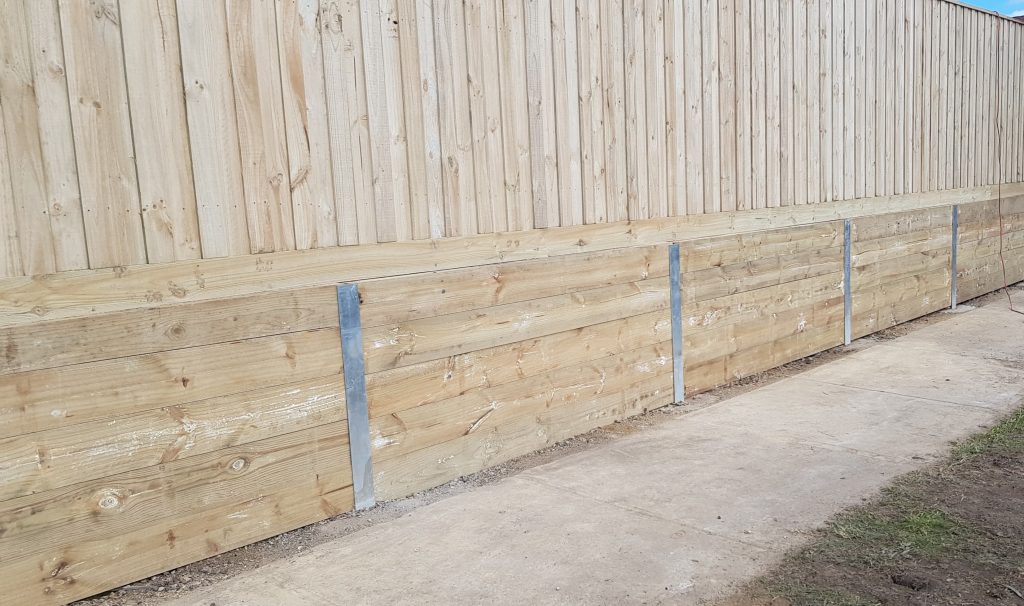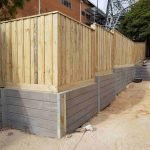Introduction
When it concerns landscape design and structural stability, retaining walls play an important role in holding back soil and preventing disintegration. However, lots of homeowners and home supervisors harbor misconceptions about the specialists who develop these important structures. The term "retaining wall installer" includes various roles, including retaining wall builders and specialists specializing in materials like concrete sleeper, H beam, wood sleeper, timber sleeper, and stone. This short article intends to clarify 5 Common Misconceptions About Retaining Wall Installers to help you make notified choices when employing these experts.
1. Misunderstanding 1: All Retaining Wall Installers Are the Same
Understanding the Variety of Professionals
When you hear "retaining wall installer," what comes to mind? Lots of people assume that all installers are similarly competent and educated. Nevertheless, that's far from the truth. The truth is that maintaining wall specialists can concentrate on different products and techniques.

The Different Types of Retaining Wall Builders
- Concrete Sleeper Installers: Professionals in using precast concrete panels for stability. Wood Sleeper Specialists: Focus on timber as a versatile material however may not be as durable. Stone Masonry Specialists: Proficient artisans who create aesthetically pleasing stone walls. H Beam Lovers: Professionals who utilize steel beams for heavy-duty applications.
Each type of professional brings special abilities to the table. Employing a professional guarantees that your project is performed with precision.
Why Specialization Matters
Specialization matters since it results in much better project outcomes. For instance, if you're looking for a contemporary appearance with resilience, a concrete sleeper installer will likely serve you better than a wood sleeper professional. Understanding the distinctions can help set reasonable expectations for your project.
2. Mistaken belief 2: Retaining Wall Installation Is Practically Aesthetics
The Structural Value of Retaining Walls
While aesthetic appeals are undeniably crucial in landscaping, believing that retaining wall setup is simply cosmetic is misinforming. The primary function of maintaining walls is to offer structural support against lateral earth pressures.
Real-Life Circumstances Where Structure Matters
Imagine living on a slope with no retaining wall contractors support; in time, you would face major erosion issues. Appropriately installed retaining walls prevent landslides and secure your property's foundation. Disregarding this aspect can cause costly repairs down the line.
Balancing Aesthetic appeals with Functionality
The best maintaining wall installers understand how to balance appeal with performance. They can develop aesthetically attractive styles while also making sure that the structure successfully serves its purpose.
3. Mistaken belief 3: Do It Yourself Projects Are Always Less Expensive Than Hiring Professionals
The Hidden Costs of DIY Installation
Many homeowners think they can save money by tackling their retaining wall task themselves; however, this isn't constantly the case. While initial expenses may seem lower when selecting a DIY method, hidden costs often accumulate quickly.
Common Hidden Expenses Include:
- Materials: Buying premium stone or timber can be pricey. Equipment Rentals: Leasing specialized tools adds overhead. Labor Time: Your time has worth too; think about how long you'll spend on this project. Mistakes: Errors can cause pricey rework and even structural failures.
When Professional Help Makes Financial Sense
An expert retaining wall contractor not just brings know-how however also effectiveness that conserves you time and ultimately money in the long run. Their experience enables them to predict possible pitfalls and resolve them proactively.
4. Mistaken belief 4: Any Material Will Work for Any Situation
Choosing the Right Material for Your Environment and Terrain
It's simple to believe any product can be used interchangeably when building a keeping wall; nevertheless, each material has specific advantages fit for particular situations.
Material Breakdown: Which One Fits You?
Concrete Sleeper: Perfect for modern aesthetic appeals and strong support. Wood Sleeper: Uses a rustic appearance however might need upkeep over time. Stone: Offers natural beauty but often comes at a higher cost. H Beam: Excellent for durable applications however less aesthetic appeal than other materials. Timber Sleeper: Affordable yet less resilient compared to concrete or stone options.Consulting Experts Helps You Select Wisely
Consulting with knowledgeable retaining wall installers ensures you're choosing the best material based upon regional environment conditions and soil types-- both crucial elements impacting durability.


5. Misconception 5: All Retaining Wall Contractors Are Overpriced
Breaking Down Rates Models in Retaining Wall Installation
There's a dominating belief that all professionals charge exorbitant fees for their services; however, prices differs extensively based on several factors such as experience level, materials utilized, and intricacy of the job.
Factors That Impact Specialist Rates Include:
- Type of Product Used (e.g., wood sleeper vs stone) Project Size Labor Costs Geographic Location Accessibility Issues
Finding Worth Beyond Cost Alone
While it's appealing to go with the most affordable bidder, consider what you're getting for your investment; often paying slightly more causes superior workmanship and longevity of your structure.
FAQs
Q1: What ought to I look for when employing a retaining wall installer?
A1: Try to find experience in comparable jobs, client reviews, licensing credentials, and service warranties on work performed.
Q2: How do I know if my property needs a retaining wall?
A2: If you're experiencing soil erosion or have actually sloped terrain affecting your home's foundation stability, it's a good idea to consult an expert.
Q3: What products are best matched for property keeping walls?
A3: Options consist of concrete sleepers for modern looks, natural stone for visual appeals, or dealt with wood sleepers if you're trying to find something affordable yet functional.
Q4: Can I install a maintaining wall myself?
A4: While it's possible to do so as a DIY job, hiring specialists usually leads to better results due to their proficiency in handling complicated scenarios effectively.
Q5: The length of time does it require to install a retaining wall?
A5: Depending upon size and intricacy, installation can take anywhere from one day as much as a number of weeks when representing curing times or site preparation needs.
Q6: Are there permits required for setting up a keeping wall?
A6: Yes! Depending on your local policies and zoning laws, obtaining licenses before beginning construction might be essential-- contact regional authorities first!
Conclusion
Understanding these misunderstandings about maintaining wall installers is crucial when making decisions associated with your landscape style or home management needs. From recognizing specialization among professionals to understanding prices structures-- knowledge is power! By exposing these myths surrounding retainers like those worrying concrete sleepers versus wood options or questioning whether do it yourself really saves cash-- you'll be much better equipped! So next time you're considering including or refurbishing a maintaining structure in the house believe seriously about who you employ; after all-- your financial investment is worthy of professional attention!